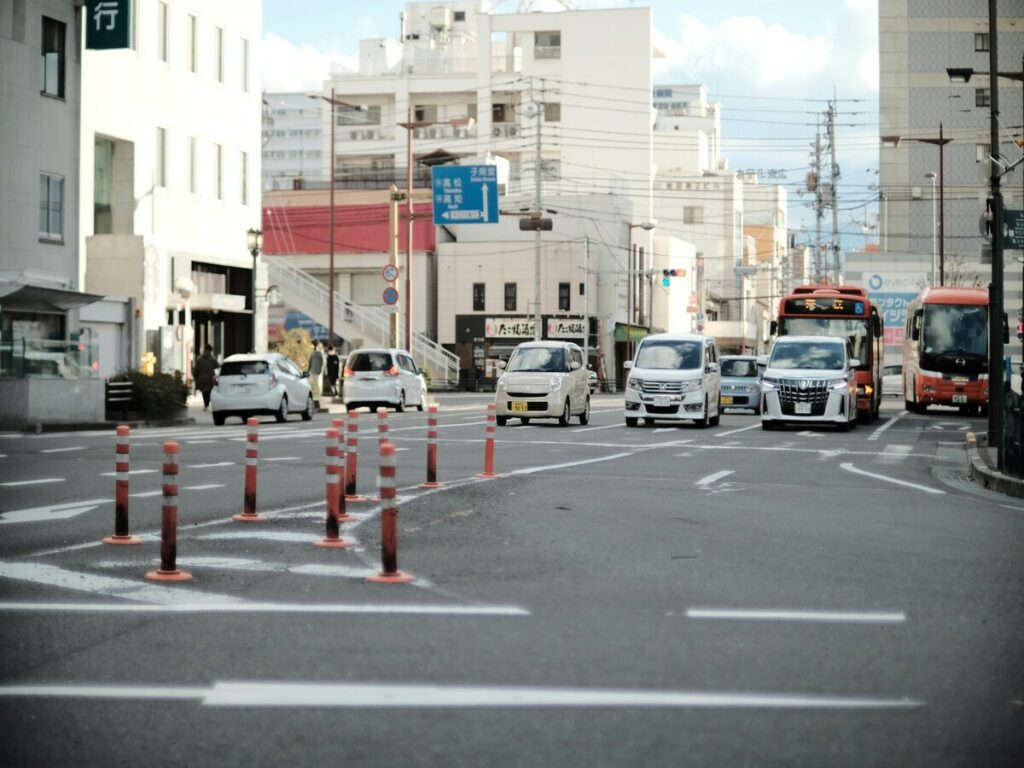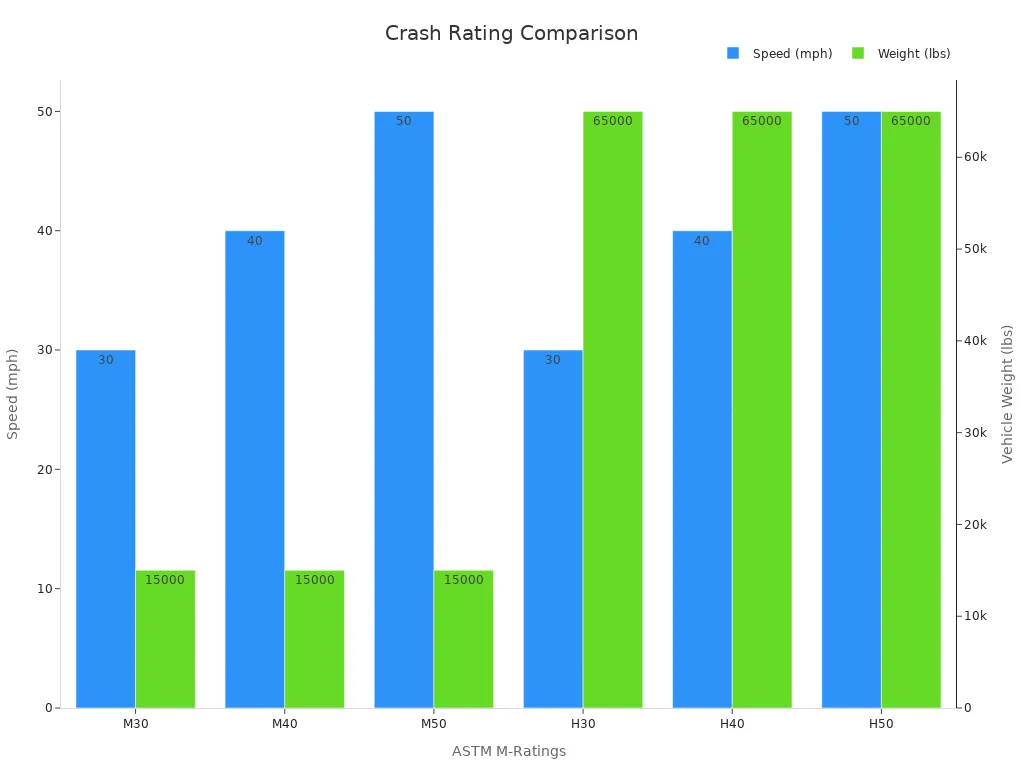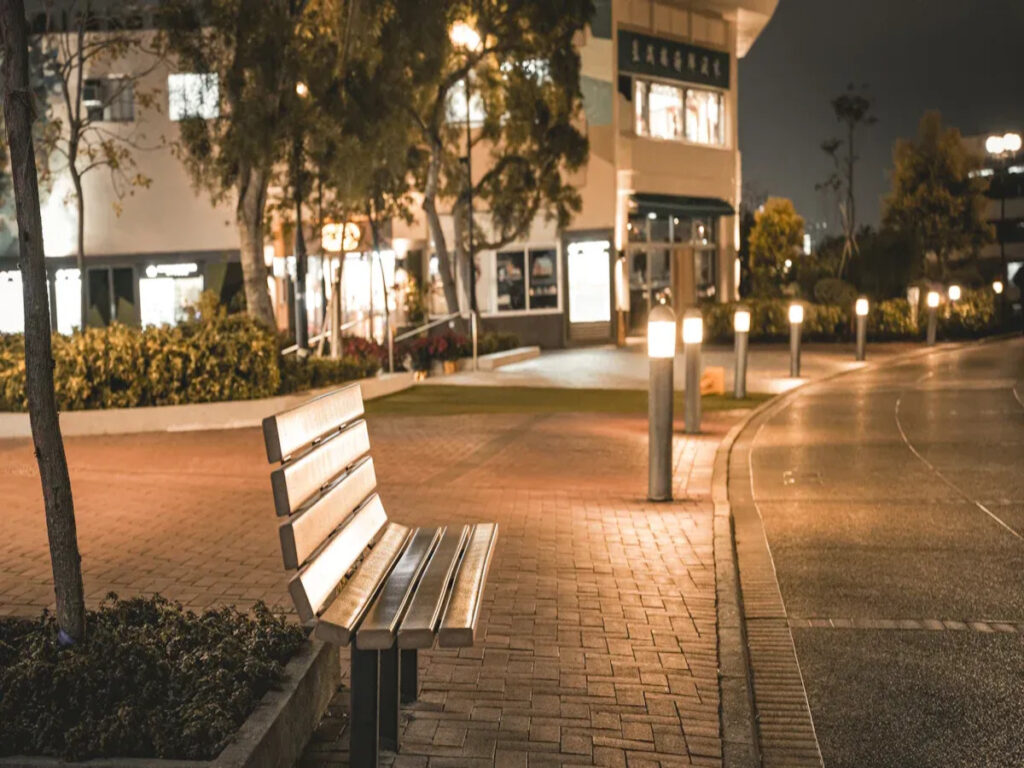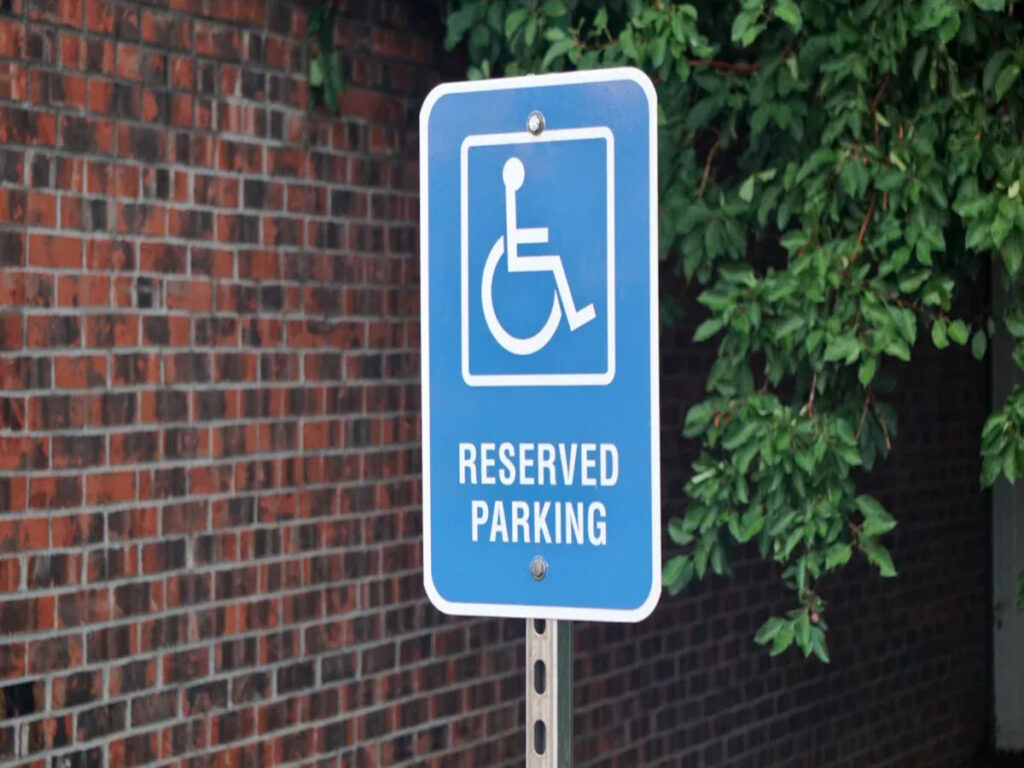क्रैश-रेटेड बोलार्ड क्रैश के दौरान वाहनों को रोकने के लिए डिज़ाइन किए गए मजबूत अवरोध हैं, लोगों की रक्षा करने में मदद करना, इमारतों, और व्यस्त या उच्च-सुरक्षा क्षेत्रों में महत्वपूर्ण बुनियादी ढांचा. इन बोलार्ड का परीक्षण k- रेटिंग का उपयोग करके किया जाता है, जो वाहन की गति और वजन के आधार पर प्रभावों का सामना करने की उनकी क्षमता को मापते हैं.
जैसे -जैसे शहर बढ़ते रहते हैं, सुरक्षा और भी महत्वपूर्ण हो जाती है. द्वारा 2050, ऊपर 68% वैश्विक आबादी शहरी क्षेत्रों में रहने की उम्मीद है, महत्वपूर्ण रूप से प्रभावी सुरक्षा बुनियादी ढांचे की आवश्यकता को बढ़ाना. लंदन और न्यूयॉर्क जैसे प्रमुख शहर पहले से ही अनधिकृत वाहनों को प्रतिबंधित क्षेत्रों में प्रवेश करने से रोकने के लिए बोलार्ड का उपयोग करते हैं. इस दौरान, ऑनलाइन शॉपिंग के उदय ने भारी यातायात को बढ़ाया है, जो घने शहरी सेटिंग्स में टकराव का जोखिम उठाता है.
उच्च जोखिम वाले स्थानों के लिए, क्रैश-रेटेड बोलार्ड आवश्यक हैं. इसके विपरीत, नियमित धातु के बोल्ड कम संवेदनशील क्षेत्रों में रोजमर्रा की यातायात नियंत्रण के लिए उपयुक्त हैं.
चाबी छीनना
- क्रैश-रेटेड बोलार्ड्स सरकारी भवनों और भीड़ वाले क्षेत्रों जैसे महत्वपूर्ण स्थानों की रक्षा करते हैं. वे लोगों को सुरक्षित रखने के लिए वाहनों को अवरुद्ध करते हैं.
- के-रेटिंग दिखाते हैं कि बोल्ड कितने मजबूत हैं. K4 चुनें, K8, या K12 खतरे के स्तर पर निर्भर करता है और कितनी तेजी से कारें पास में जाती हैं.
- नियमित बोलार्ड सुरक्षित स्थानों में अच्छी तरह से काम करते हैं. वे गाइड ट्रैफ़िक में मदद करते हैं, कम लागत, और अंदर डालने के लिए सरल हैं.
क्रैश-रेटेड बोलार्ड क्या हैं?
वे क्या हैं और वे क्यों मायने रखते हैं.
क्रैश-रेटेड बोलार्ड वाहनों को रोकने के लिए मजबूत यातायात बाधाएं हैं. वे लोगों की रक्षा करते हैं, इमारतों, और महत्वपूर्ण क्षेत्र जहां सुरक्षा महत्वपूर्ण है. नियमित बोलार्ड के विपरीत, इन्हें बड़ी दुर्घटनाओं को संभालने के लिए परीक्षण किया जाता है. उदाहरण के लिए, वे 15,000 पाउंड के ट्रक को रोक सकते हैं 30 को 50 मील प्रति घंटा. आप उन्हें दूतावासों में पाएंगे, सरकारी कार्यालय, और व्यस्त पैदल यात्री क्षेत्र.
शहर अक्सर सार्वजनिक स्थानों को सुरक्षित करने के लिए क्रैश-रेटेड बोलार्ड का उपयोग करते हैं. ये बोलार्ड प्लेसमेंट और इंस्टॉलेशन के लिए सख्त नियमों का पालन करते हैं. उनके ‘के-रेटिंग्स’ दिखाते हैं कि वे 15,000 पाउंड के ट्रक को कितनी अच्छी तरह से रोकते हैं 30, 40, या 50 मील प्रति घंटा. उन्हें पहले खतरनाक वाहन हमलों को रोकने के लिए बनाया गया था. कुछ का तर्क है कि उन्हें हर जगह की जरूरत नहीं हो सकती है.
वे नियमित बोलार्ड से कैसे भिन्न होते हैं.
क्रैश-रेटेड बोलार्ड नियमित लोगों की तुलना में बहुत मजबूत होते हैं. नियमित रूप से बोलार्ड कारों को गाइड करने और लोगों को सुरक्षित रखने में मदद करते हैं. लेकिन वे एक तेज कार को रोक नहीं सकते. सख्त सुरक्षा मानकों को पूरा करने के लिए क्रैश-रेटेड बोलार्ड का परीक्षण किया जाता है एएसटीएम F2656. यह उन्हें उच्च जोखिम वाले क्षेत्रों के लिए एकदम सही बनाता है. सामान्य ट्रैफ़िक नियंत्रण के लिए नियमित रूप से बोलार्ड बेहतर काम करते हैं.
उपयोग की गई सामग्री और डिजाइन.
क्रैश-रेटेड बोलार्ड्स स्टेनलेस स्टील जैसी कठिन सामग्रियों से बनाए जाते हैं. वे बिना टूटे मजबूत प्रभावों को संभाल सकते हैं. कुछ में बेहतर दृश्यता या अतिरिक्त सुविधाओं के लिए कवर हैं. उन्हें जमीन में या सतह पर स्थापित किया जा सकता है, आवश्यकता पर निर्भर करता है. ASTM F3016 जैसे मानक सुनिश्चित करते हैं कि वे सुरक्षित और विश्वसनीय हैं.
लेकिन इतने सारे विकल्प उपलब्ध हैं, सही बोलार्ड सामग्री चुनना चुनौतीपूर्ण हो सकता है. प्रभाव प्रतिरोध जैसे कारक, दृश्यता, इंस्टॉलेशन तरीका, और स्थान-विशिष्ट आवश्यकताएं सभी एक भूमिका निभाते हैं. आपको एक सूचित निर्णय लेने में मदद करने के लिए, ब्लॉग का अन्वेषण करें अपनी परियोजना के लिए सबसे अच्छा ट्रैफ़िक बोलार्ड सामग्री कैसे चुनें, जो प्रत्येक सामग्री प्रकार और उनके आदर्श अनुप्रयोगों की ताकत को तोड़ता है.
के-रेटिंग को समझना
क्या k-ratings मापता है (वाहन गति और वजन प्रभाव प्रतिरोध)
के-रेटिंग से पता चलता है कि दुर्घटनाओं के खिलाफ बोल्ड कितने मजबूत हैं. वे वाहन की गति और वजन के आधार पर ट्रैफिक बोलार्ड का परीक्षण करते हैं. यह जोखिम भरे क्षेत्रों में सुरक्षा सुनिश्चित करने में मदद करता है. एक K4 बोलार्ड 15,000 पाउंड के ट्रक को रोक सकता है 30 मील प्रति घंटा. ये रेटिंग आपकी आवश्यकताओं के लिए सही बोलार्ड लेने में मदद करते हैं.
क्रैश परीक्षण इन रेटिंगों को सेट करने के लिए महत्वपूर्ण हैं. इंजीनियर बोलार्ड ताकत की जांच करने के लिए वास्तविक क्रैश परीक्षण और कंप्यूटर मॉडल का उपयोग करते हैं. क्रैश स्पीड की भविष्यवाणी करने के लिए एक नए अध्ययन ने मशीन लर्निंग का इस्तेमाल किया. यह बहुत सटीक था, की केवल एक छोटी सी त्रुटि के साथ 6.76 किमी/घंटा. ये परीक्षण सुनिश्चित करते हैं कि बोलार्ड वास्तविक जीवन की स्थितियों में अच्छी तरह से काम करते हैं.
K4 का स्पष्टीकरण, K8, और K12 रेटिंग
के-रेटिंग के तीन स्तर हैं: K4, K8, और K12. प्रत्येक स्तर गति और वजन को दर्शाता है एक बोलार्ड रोक सकता है. यह भी दिखाता है कि ट्रैफिक बोलार्ड को मारने के बाद वाहन कितनी दूर तक चलता है. यहाँ एक साधारण तालिका है:
| रेटिंग | वाहन भार | रफ़्तार | प्रवेश स्तर |
|---|---|---|---|
| K4 (एम 30) | 15,000 lb | 30 मील प्रति घंटा | पी 1: ≤ 3.3 फुट |
| K8 (एम 40) | 15,000 lb | 40 मील प्रति घंटा | पी 2: 3.31 - 23 फुट |
| K12 (M50) | 15,000 lb | 50 मील प्रति घंटा | पी 3: 23.1 - 98.4 फुट |
उदाहरण के लिए, K12 बोलार्ड्स 15,000 पाउंड के ट्रक को रोकते हैं 50 मील प्रति घंटा. ट्रक से अधिक नहीं चलेगा 98.4 बोलार्ड से पहले पैर. K12 बोलार्ड दूतावासों या सैन्य ठिकानों जैसी जगहों के लिए सबसे अच्छे हैं. K4 या K8 बोलार्ड कम जोखिम वाले क्षेत्रों के लिए काम करते हैं.
ऐतिहासिक संदर्भ और आधुनिक एएसटीएम F2656 मानक
के-रेटिंग ने यू.एस.. सुरक्षा विभाग विभाग. उन्हें हवाई अड्डों और सरकारी भवनों जैसे महत्वपूर्ण स्थानों की रक्षा के लिए बनाया गया था. अधिक समय तक, एएसटीएम F2656 मानकों ने के-रेटिंग को बदल दिया. ये नए नियम बोलार्ड के लिए बेहतर सुरक्षा दिशानिर्देश देते हैं.
वास्तविक घटनाओं से पता चलता है कि ये मानक क्यों मायने रखते हैं. में 2025, Bourbon Street पर टूटे हुए Bollards ने एक वाहन हमला किया. विशेषज्ञों ने कहा कि अस्थायी बाधाएं इसे रोक सकती हैं. पर 2025 गुलाब परेड, मोबाइल बाधाओं ने लोगों को कारों से सुरक्षित रखा. ऑस्टिन जैसे शहर अब सार्वजनिक घटनाओं के लिए पोर्टेबल बाधाओं का उपयोग करते हैं. ये बाधाएं ASTM F2656 नियमों का पालन करती हैं, आसान आंदोलन के साथ सुरक्षा का मिश्रण. बोलार्ड के बारे में सीखना दिखाता है कि वे आज लोगों को कैसे सुरक्षित रखते हैं.
क्या आपको क्रैश-रेटेड बोलार्ड की आवश्यकता है?

के बारे में सोचने की बातें: जोखिम, जगह, और लागत.
क्रैश-रेटेड बोलार्ड पर निर्णय लेते समय, तीन मुख्य बातों पर विचार करें: जोखिम, जगह, और लागत.
- जोखिम:
अपने क्षेत्र में खतरों की जाँच करें. सरकारी साइटों या व्यस्त सार्वजनिक क्षेत्रों जैसे उच्च जोखिम वाले स्थानों को अक्सर वाहन के खतरों को रोकने के लिए क्रैश-रेटेड बोलार्ड की आवश्यकता होती है. कम जोखिम वाले स्पॉट को केवल नियमित रूप से बोल्ड की आवश्यकता हो सकती है. - जगह:
जहां आप बोलार्ड्स को बहुत मायने रखते हैं. भीड़ भरे शहर के क्षेत्रों या महत्वपूर्ण इमारतों के पास स्थानों को मजबूत बोलार्ड की जरूरत है. पार्किंग स्थल या स्कूल क्षेत्रों को केवल यातायात नियंत्रण के लिए नियमित रूप से आवश्यकता हो सकती है. - लागत:
क्रैश-रेटेड बोलार्ड की लागत अधिक है क्योंकि वे मजबूत सामग्री का उपयोग करते हैं और कठिन परीक्षण से गुजरते हैं. यदि आपका क्षेत्र उच्च जोखिम नहीं है, नियमित रूप से बोलार्ड सस्ते हैं और अभी भी बुनियादी सुरक्षा प्रदान करते हैं.
बख्शीश: निर्णय लेने से पहले एक पूर्ण सुरक्षा जांच करें. अपने बजट के साथ सुरक्षा जरूरतों से मेल करने के लिए सुरक्षा विशेषज्ञों से बात करें.
उन स्थानों को क्रैश-रेटेड बोलार्ड की जरूरत है.
कुछ स्थानों पर सुरक्षा के लिए क्रैश-रेटेड बोल्ड होना चाहिए. इसमे शामिल है:
- लंदन: सुचारू यातायात की अनुमति देते हुए बोलार्ड कारों से लोगों को सुरक्षित रखते हैं.
- न्यूयॉर्क शहर: टाइम्स स्क्वायर पैदल चलने वालों की सुरक्षा और शहर के लुक को फिट करने के लिए क्रैश-रेटेड बोलार्ड का उपयोग करता है.
- न्यू ऑरलियन्स: ए 2025 कार हमले से पता चला कि काम करने वाले बोल्ड क्यों महत्वपूर्ण हैं. पोर्टेबल बाधाएं इसे रोक सकती थीं.
- गुलाब परेड (2025): मोबाइल बाधाओं ने घटना को सुरक्षित रखा, बड़ी भीड़ के लिए उनका मूल्य दिखा रहा है.
- ऑस्टिन: पोर्टेबल बाधाएं सार्वजनिक कार्यक्रमों के दौरान सुरक्षा में सुधार करती हैं, उनके लचीलेपन को साबित करना.
इन उदाहरणों से पता चलता है कि खतरनाक क्षेत्रों में क्रैश-रेटेड बोलार्ड्स कम जोखिम कैसे कम करते हैं, लोगों और इमारतों को सुरक्षित रखना.
जब नियमित रूप से बोलार्ड पर्याप्त होते हैं.
कई मामलों में, क्रैश रेटिंग की आवश्यकता के बिना नियमित रूप से बोलार्ड अच्छी तरह से काम करते हैं. वे महान हैं:
- तट्राफिक कंट्रोल: पार्किंग स्थल या शहर की सड़कों पर कारों का मार्गदर्शन करना.
- पैदल यात्री सुरक्षा: स्कूल क्षेत्रों या शांत क्षेत्रों में लोगों की रक्षा करना.
- अस्थायी घटनाएँ: हटाने योग्य बोलार्ड के साथ त्योहारों या मेलों में भीड़ का प्रबंधन.
| विशेषता | विवरण |
|---|---|
| मानकों | इवा 14-1, में 1317, में 16303 |
| वाहन प्रकार | एम 1 वर्ग 900 किलो के वाहन 50 किमी/घंटा; एम 1 वर्ग 1500 किलो के वाहन 32 किमी/घंटा |
| परिक्षण विधि | असली वाहन दुर्घटना परीक्षण या कंप्यूटर सिमुलेशन |
| प्रदर्शन की जाँच की गई | प्रवेश, गति प्रभाव, आंदोलन, और नुकसान का स्तर |
नियमित रोड बोलार्ड सस्ती और लचीले हैं. उन्हें रेल की तुलना में कम रखरखाव की आवश्यकता होती है और बेहतर दृश्यता की अनुमति देता है. कम जोखिम वाले क्षेत्रों के लिए, वे सुरक्षा और अच्छी तरह से लागत को संतुलित करते हैं.
टिप्पणी: नियमित रूप से बोलार्ड में क्रैश रेटिंग नहीं होती है, लेकिन IWA जैसे सुरक्षा नियमों को पूरा करते हैं 14-1 और और 1317. वे सुरक्षित स्थानों में अच्छी तरह से काम करते हैं.
के-रेटिंग के लिए विकल्प
एएसटीएम एम-रेटिंग क्या हैं और वे कैसे भिन्न हैं?
एएसटीएम एम-रेटिंग पुराने के-रेटिंग की तुलना में नए हैं. ये रेटिंग, एएसटीएम इंटरनेशनल द्वारा बनाया गया, जांचें कि क्रैश-रेटेड स्टील बोलार्ड वाहनों को कितनी अच्छी तरह से रोकते हैं. वे गति को देखते हैं, वज़न, और वाहन या उसका लोड कितनी दूर चलता है. के-रेटिंग के विपरीत, जो इस बात पर ध्यान केंद्रित करता है कि एक वाहन के सामने एक बाधा से कितनी दूर तक जाती है, एम-रेटिंग मापते हैं कि पेलोड कितना शिफ्ट होता है. यह सुरक्षा का एक स्पष्ट विचार देता है.
यहाँ K-ratings और M-ratings की एक सरल तुलना है:
| रेटिंग प्रकार | रफ़्तार (मील प्रति घंटा) | प्रवेश दूरी | द्वारा विकसित किया गया |
|---|---|---|---|
| K रेटिंग | 30 | से कम 3 पैर | की |
| K रेटिंग | 40 | बीच में 3 और 20 पैर | की |
| K रेटिंग | 50 | बीच में 20 और 50 पैर | की |
| एम रेटिंग | 30 | एएसटीएम मानकों में शामिल है | एएसटीएम |
| एम रेटिंग | 40 | एएसटीएम मानकों में शामिल है | एएसटीएम |
| एम रेटिंग | 50 | एएसटीएम मानकों में शामिल है | एएसटीएम |
एएसटीएम एम-रेटिंग में भी H30 जैसे प्रकार हैं, H40, और H50. ये भारी वाहनों को संभालते हैं 65,000 पाउंड. यह उन्हें कई स्थानों के लिए उपयोगी बनाता है, जैसे महत्वपूर्ण इमारतों या व्यस्त सार्वजनिक क्षेत्रों की रक्षा करना.

आपको अन्य क्रैश रेटिंग सिस्टम का उपयोग कब करना चाहिए?
ASTM M-ratings का उपयोग करने के बारे में सोचें यदि आपकी परियोजना को अधिक विवरण की आवश्यकता है या विशेष जोखिमों का सामना करना पड़ता है. उदाहरण के लिए, यदि आपको बड़े वाहनों को रोकने या पेलोड मूवमेंट की जांच करने के लिए बोलार्ड की आवश्यकता है, एम-रेटिंग बेहतर काम करते हैं.
ये रेटिंग बदलती सुरक्षा जरूरतों वाले स्थानों के लिए भी महान हैं. सार्वजनिक कार्यक्रम, प्रमुख इमारतें, और व्यस्त क्षेत्र एएसटीएम-रेटेड बोलार्ड से लाभ उठा सकते हैं. प्लस, एम-रेटिंग वैश्विक सुरक्षा नियमों से मेल खाते हैं, उन्हें अंतरराष्ट्रीय परियोजनाओं के लिए अच्छा बनाना.
बख्शीश: यह तय करने के लिए एक सुरक्षा विशेषज्ञ से बात करें कि क्या K-ratings या ASTM M-ratings आपकी साइट के लिए बेहतर हैं.
क्रैश-रेटेड स्टील बोलार्ड के अनुप्रयोग

जहां उनका उपयोग किया जाता है: सरकार, वित्तीय, और सार्वजनिक स्थान.
क्रैश-रेटेड स्टील बोलार्ड उच्च जोखिम वाले स्थानों की रक्षा में मदद करते हैं. उनका उपयोग सरकारी भवनों में किया जाता है, दूतावासों, और सैन्य आधार. ये बोलार्ड्स वाहनों को संवेदनशील क्षेत्रों में प्रवेश करने से रोकते हैं. उदाहरण के लिए, M50- रेटेड बोलार्ड 15,000 पाउंड के ट्रक को रोकते हैं 50 मील प्रति घंटा. यह महत्वपूर्ण स्थानों के लिए शीर्ष स्तर की सुरक्षा सुनिश्चित करता है.
बैंक और डेटा सेंटर भी क्रैश-रेटेड बोलार्ड का उपयोग करते हैं. ये स्थान बहुमूल्य जानकारी और उपकरण संग्रहीत करते हैं. Bollards ASTM या मीटिंग डॉस मानक उन्हें वाहन हमलों से सुरक्षित रखें. वे इन महत्वपूर्ण साइटों की सुरक्षा के लिए सख्त सुरक्षा नियमों का पालन करते हैं.
पार्क और इवेंट स्पेस जैसे सार्वजनिक क्षेत्रों को भी लाभ होता है. बोलार्ड कारों को गलती से या जानबूझकर भीड़ वाले क्षेत्रों में प्रवेश करने से रोकते हैं. यह आगंतुकों को सुरक्षित रखता है. बोलार्ड की आवश्यकता तेजी से बढ़ रही है. द्वारा 2025, वैश्विक बोलार्ड बाजार तक पहुंच सकता है $850 दस लाख.
| साक्ष्य प्रकार | विवरण |
|---|---|
| दुर्घटना-रेटेड बाधाएं | एएसटीएम या डॉस विनिर्देशों को पूरा करने के लिए परीक्षण किया गया, प्रभावों के लिए प्रतिरोध सुनिश्चित करना. |
| इंजीनियर रेटेड बाधाएं | सिमुलेशन का उपयोग करके डिज़ाइन किया गया, सुरक्षा जरूरतों को पूरा करते हुए लचीलापन प्रदान करना. |
वे लोगों और संपत्ति की रक्षा कैसे करते हैं.
क्रैश-रेटेड बोलार्ड्स जान बचाते हैं और इमारतों की रक्षा करते हैं. वे दूतावासों और सैन्य ठिकानों जैसी जगहों पर महत्वपूर्ण हैं. इन क्षेत्रों को वाहन के खतरों के खिलाफ मजबूत बचाव की आवश्यकता है. स्टोर और पार्किंग लॉट भी दुर्घटनाओं और हमलों को रोकने के लिए बोलार्ड का उपयोग करते हैं.
बोलार्ड भी पैदल यात्रियों को सुरक्षित रखते हैं. वे वॉकवे की रक्षा करते हैं, पार्क, और कारों से व्यस्त क्षेत्र. उदाहरण के लिए, M30- रेटेड बोलार्ड्स 15,000 पाउंड के ट्रक को रोकते हैं 30 मील प्रति घंटा. यह उन्हें सार्वजनिक स्थानों को हासिल करने के लिए महान बनाता है. अधिक वाहन हमले होने के साथ, बोलार्ड पहले से कहीं अधिक महत्वपूर्ण हैं.
| एम रेटिंग | वाहन भार | रफ़्तार | विवरण |
|---|---|---|---|
| एम 30 | 6,800 किलोभास (15,000 lb) | 30 मील प्रति घंटा (48 किमी/घंटा) | इस वजन/गति पर एक ट्रक से प्रभाव डालता है. |
| M50 | 6,800 किलोभास (15,000 lb) | 50 मील प्रति घंटा (80 किमी/घंटा) | उच्चतम प्रभाव रेटिंग का सामना करता है. |
क्रैश-रेटेड बोलार्ड्स जोड़ना स्थान सुरक्षित बनाता है. वे महत्वपूर्ण इमारतों की रक्षा करते हैं और नुकसान के जोखिम को कम करते हैं. ये बोलार्ड मजबूत और विश्वसनीय हैं, उन्हें आधुनिक सुरक्षा योजनाओं का एक महत्वपूर्ण हिस्सा बनाना.
सही बोलार्ड चुनना
उनके उद्देश्य के आधार पर बोलार्ड चुनने के लिए सरल टिप्स
सही बोलार्ड चुनना इस बात पर निर्भर करता है कि आपको उनकी आवश्यकता कहां और क्यों है. पहला, उनकी मुख्य नौकरी का पता लगाएं. क्या वे यातायात को नियंत्रित करने के लिए हैं, लोगों को सुरक्षित रखना, या उच्च जोखिम वाले धब्बों की रक्षा करना? विभिन्न कार्यों को विभिन्न प्रकार के बोलार्ड की आवश्यकता होती है. उदाहरण के लिए, वाहन के खतरों को रोकने के लिए क्रैश-रेटेड बोलार्ड महान हैं. कारों को निर्देशित करने या रिक्त स्थान को चिह्नित करने के लिए नियमित रूप से बोलार्ड बेहतर हैं.
ट्रैफ़िक बोलार्ड की सामग्री के बारे में सोचें. स्टेनलेस स्टील मजबूत है और अच्छी तरह से प्रभाव डालता है. एल्यूमीनियम जंग नहीं है, तो यह गीले क्षेत्रों के लिए अच्छा है. डिजाइन मायने रखता है. आप आकार चुन सकते हैं, रंग, या क्षेत्र से मेल खाने के लिए आकार. यह अपना काम करते समय बोलार्ड्स को अच्छा दिखने में मदद करता है.
पर्यावरण के बारे में मत भूलना. मौसम और तापमान प्रभावित कर सकते हैं कि बोलार्ड बाहर कैसे काम करते हैं. भी, उन बॉलार्ड्स को चुनें जो स्थापित करना और प्रतिस्थापित करना आसान है. सुनिश्चित करें कि वे के-रेटिंग या एएसटीएम मानकों जैसे सुरक्षा नियमों को पूरा करते हैं. यह सुनिश्चित करता है कि वे उम्मीद के मुताबिक काम करें.
| मानदंड | विवरण |
|---|---|
| सामग्री | जंग से बचने के लिए ताकत या एल्यूमीनियम के लिए स्टेनलेस स्टील का उपयोग करें. |
| उद्देश्य | बोलार्ड को अपनी नौकरी से मिलान करें, ट्रैफ़िक नियंत्रण या सुरक्षा की तरह. |
| दुर्घटना रेटिंग | सुरक्षा सुनिश्चित करने के लिए के-रेटिंग जैसी सुरक्षा रेटिंग की जाँच करें. |
| डिज़ाइन | सही आकार चुनें, रंग, और क्षेत्र को फिट करने के लिए आकार. |
बख्शीश: अपनी विशिष्ट आवश्यकताओं के आधार पर बोलार्ड चुनें. उदाहरण के लिए, दृश्यता के लिए गोदामों को चमकीले रंगों की आवश्यकता हो सकती है, जबकि पार्क शैली पर ध्यान केंद्रित कर सकते हैं.
क्यों विशेषज्ञ सलाह और निम्नलिखित नियम मायने रखते हैं
विशेषज्ञों से बात करने से आपको अपनी आवश्यकताओं के लिए सबसे अच्छा बोल्ड चुनने में मदद मिलती है. सुरक्षा विशेषज्ञ और इंजीनियर आपकी साइट की जांच कर सकते हैं और सही प्रकार का सुझाव दे सकते हैं. वे जोखिमों पर विचार करते हैं, संभावित प्रभाव, और पर्यावरण. उनकी सलाह आपको बहुत अधिक खर्च करने या गलत तरह से चुनने से बचने में मदद करती है.
के-रेटिंग और एएसटीएम प्रमाणपत्र जैसे सुरक्षा मानक बहुत महत्वपूर्ण हैं. ये नियम परीक्षण करते हैं कि बोलार्ड कितनी अच्छी तरह से दुर्घटनाओं को संभालते हैं. वे मजबूत और विश्वसनीय बोलार्ड लेने में बिल्डरों का मार्गदर्शन करते हैं. इन मानकों का पालन करना सुनिश्चित करता है कि बोलार्ड हवाई अड्डों या सरकारी भवनों जैसे स्थानों की रक्षा कर सकते हैं.
टिप्पणी: सुरक्षा नियम स्थान से भिन्न होते हैं. समस्याओं से बचने के लिए हमेशा स्थानीय नियमों की जांच करें. यह कदम सुरक्षा में सुधार करता है और आपके प्रोजेक्ट को कानूनी बनाए रखता है.
विशेषज्ञों के साथ काम करके, आपको ऐसे समाधान मिलते हैं जो आपकी आवश्यकताओं और बजट को फिट करते हैं. यह सुनिश्चित करता है कि आपके बोलार्ड सुरक्षित हैं, उपयोगी, और सभी नियमों का पालन करें.
क्रैश-रेटेड बोलार्ड लोगों और संपत्ति को सुरक्षित रखने में मदद करते हैं. आखिर में 10 साल, ऊपर 400 चिकित्सा स्थलों पर दुर्घटनाएँ हुईं. इससे पता चलता है कि वे इतने महत्वपूर्ण क्यों हैं. Ustach जैसे विशेषज्ञों का कहना है कि वे आपातकालीन कक्ष सुरक्षा के लिए महत्वपूर्ण हैं. अपनी साइट के जोखिमों की जाँच करें और सर्वश्रेष्ठ बोलार्ड लेने के लिए विशेषज्ञों से बात करें.
अक्सर पूछे जाने वाले प्रश्न
क्रैश-रेटेड बोलार्ड क्या हैं, और वे क्यों मायने रखते हैं?
क्रैश-रेटेड बोलार्ड कठिन बाधाएं हैं जो दुर्घटनाओं में वाहनों को रोकती हैं. वे दूतावासों जैसे सुरक्षित स्थानों में लोगों और इमारतों की रक्षा करते हैं.
एक बोलार्ड की के-रेटिंग क्या है?
के-रेटिंग एक क्रैश टेस्ट सर्टिफिकेशन है जिसका उपयोग एक वाहन को रोकने के लिए बोलार्ड की क्षमता को मापने के लिए किया जाता है. यह एक यू.एस.. राज्य मानक विभाग जो मूल्यांकन करता है कि एक सुरक्षा अवरोध कितनी अच्छी तरह से - ट्रैफिक बोलार्ड की तरह - अपनी गति और वजन के आधार पर एक चलती वाहन को रोक सकता है.
कैसे क्रैश रेटिंग सही बोलार्ड लेने में मदद करते हैं?
क्रैश रेटिंग से पता चलता है कि वाहन हिट के खिलाफ बोल्ड कितने मजबूत हैं. ये रेटिंग आपको सुरक्षा आवश्यकताओं के लिए सबसे अच्छा बोलार्ड चुनने में मदद करते हैं.
क्रैश-रेटेड बोलार्ड का उपयोग सार्वजनिक क्षेत्रों में किया जा सकता है?
हाँ, क्रैश-रेटेड बोलार्ड सार्वजनिक स्थानों में अच्छी तरह से काम करते हैं. वे लोगों को सुरक्षित रखते हैं और क्षेत्र के डिजाइन में फिट होते हैं, संरक्षण और शैली दोनों की पेशकश.




















